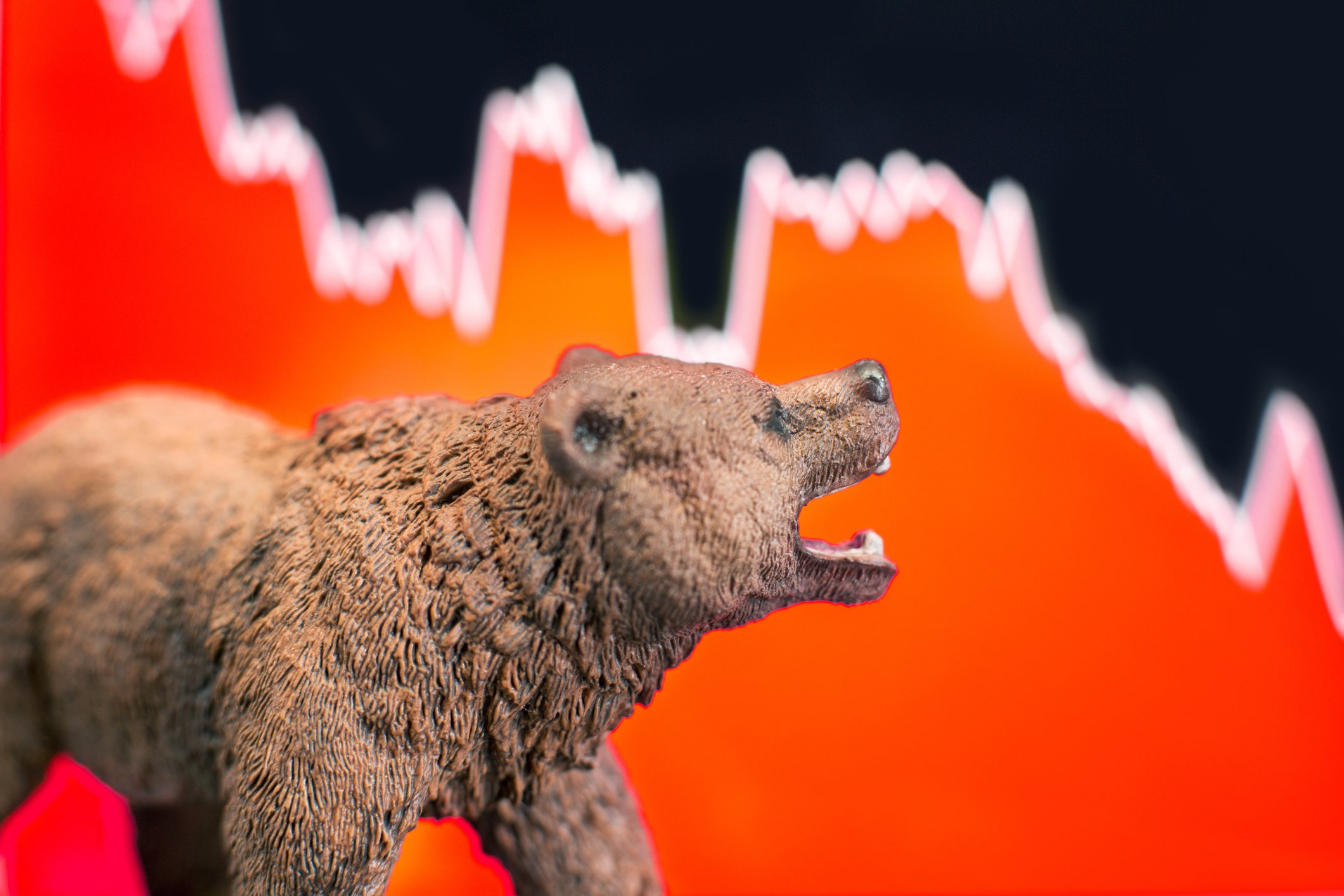Utter carnage. That's the best way to describe the worst day on Wall Street since Black Monday (Oct. 19, 1987), which is when the Dow Jones Industrial Average (^DJI 0.17%) shed 508 points, equating to 22.6% of its value at the time.
When the closing bell (mercifully) rang on March 12, 2020, the 123-year-old Dow, technology-heavy Nasdaq Composite (^IXIC 0.06%) and benchmark S&P 500 (^GSPC 0.06%) had declined by 9.99%, 9.43%, and 9.51%, respectively, which represents their fourth-, third-, and fifth-worst respective single-session percentage declines in history. I'm often quick to shrug off the fanatical terminology used by most media outlets (e.g., "plunge" or "crash") if the Dow declines by, say, 300 points, but this week, we've witnessed some true plunges in the United States' major stock indexes.
With most investors completely shell-shocked by the time frame of this move lower -- it's taken just 16 trading days to wipe almost 27% from the S&P 500 -- I figured it might be worthwhile to share some of the thoughts that crossed my mind throughout this historic session.

Image source: Getty Images.
1. The truth is, it's been painful
To begin with, I don't care whether you've been invested in the market for 50 years or five days -- a 10% single-session decline is going to sting. I've been an investor for 21 years now, and yesterday marked my largest single-day nominal loss by a mile, as well as my second-largest single-session percentage decline. When you're seeing figures in the red that are so far outside of historic norms, they're going to catch your eye and unnerve you a bit. But as you'll see, it's how you respond that matters more.
2. Trying to understand the investor psyche is impossible
Next, stop pretending that you have an inside track on how investors are going to react to constantly changing news surrounding coronavirus disease 2019 (COVID-19). What makes downside moves in the market so dramatic is the fact that emotion-based trading doesn't have "indicators" that we can track or assess ahead of time. This is why trying to time the market is such a fruitless endeavor. You may be right once in a while, but it can't be done with any consistency over the long run.
3. We may not have hit bottom yet, albeit a bounce of some sort seems likely
Yesterday did somewhat usher in a feeling of panic among investors, with margin calls likely aiding in the downward move in all three major indexes. This is more often than not a sign that a bounce may be near.
Understand, though, that we may still not have seen the bottom in the market as of yet. News surrounding COVID-19 is constantly changing, and there will be clear business and supply chain disruption as a result.

Image source: Getty Images.
4. Margin remains a big no-no
Unless you're a short-seller, you have no business trying to dabble in margin at the moment. Sure, it'll pump up your returns if you're correct, but calling a bottom simply can't be done when emotions, not reason, are driving the train.
Furthermore, as volatility picks up, it would not be surprising to see brokerages adjust their margin maintenance requirements for certain volatile securities. This could tip more margin-carrying investors into a margin call. Just say "nay" to margin!
5. You're crazy if you aren't using limit orders around market open or close
I've been waking up for more opening bells in the past three weeks than I have in the past 10 years (hey, I'm a West Coast night owl), and I can confidently say you're nuts if you're using market orders within the first or last 10 minutes of trading. Wild swings in popular stocks following the opening bell and before the closing bell could lead to some unpleasant surprises for investors using market orders. Instead, set limit orders and remain in full control of the price you're willing to pay to invest in great businesses.
6. We're going to see historic economic numbers in the weeks to come
Maybe the most jaw-dropping aspect of COVID-19's historic spread won't be the declines we've witnessed in the stock market, but the economic data we'll receive in the weeks to come. For instance, I wouldn't be surprised if the U.S. economy turns in the lowest ISM Purchasing Managers Index in over a decade or if U.S. gross domestic product (GDP) growth estimates fall to nearly 0% for the first quarter. A recession is very much on the table at the moment.

Image source: Getty Images.
7. This downtrend will be swift, but short-lived
Keeping in mind that no one knows the answer as to when this bear market will end, my expectation is that this steep downtrend in the market will be relatively short-lived. We're already down more than 25% on the Dow, Nasdaq, and S&P 500 in just over three weeks, and we're ultimately dealing with an exogenous shock from COVID-19 illness.
Had this been a serious threat to the financial industry, I'd forecast a longer recovery. But since this looks to be primarily an issue with consumer/investor psyche, I'm leaning toward a fairly quick end to the downtrend in stock valuations.
8. Monetary policy isn't going to save us
Given that this is primarily an issue of how the consumer perceives the health of the marketplace, I don't believe monetary policy actions by the Federal Reserve are going to do much of anything for the stock market. More attractive lending rates might give businesses an incentive to produce, but it's not going to change the minds of consumers who are too afraid to spend at the moment.
Additionally, the Fed has limited tools at its disposal with the federal funds target rate just 100 basis points above its historic low of 0% to 0.25%. Translation: The Fed isn't going to don a cape and save the day this time.
9. History shows that betting on the market long term is basically a sure thing
Although this bear market has been historically bad and yesterday was incredibly unnerving, you can take comfort in knowing that every single previous correction or bear market, no matter how steep, was eventually erased by a bull-market rally. Every single one. The key is that you need to give your investment thesis plenty of runway to come to fruition.
As long as your investment thesis hasn't changed -- and there's a very good chance it hasn't over the past three weeks, unless you own deeply indebted oil and gas stocks -- holding tight is going to be a prudent move.

Image source: Getty Images.
10. I'm buying, and so should you
Lastly, I'm seeing some really intriguing values out there, and I've been a buyer. Since this downtrend began, I've made 31 trades, 30 of which have been purchases. This also includes adding 11 new names to my portfolio that I didn't own a stake in a month ago. When The Motley Fool's disclosure policy allows for it (and when I'm done buying en masse), I'll be happy to discuss what stocks I've bought and why.
The point is, if you're buying on this dip, you're almost certainly going to be a happy camper five or 10 years from now.








